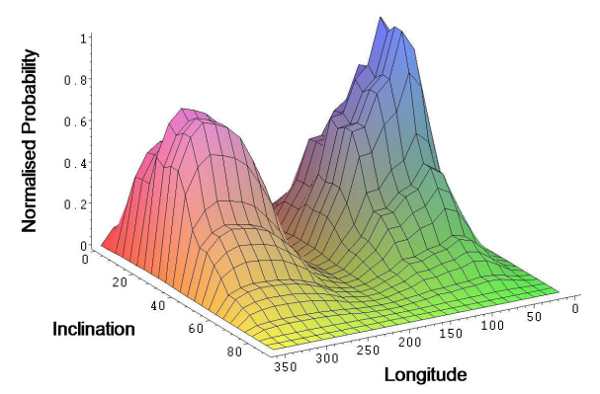IoW_20111110 - Gaia
Image of the Week |
An optimal Earth Trojan asteroid search strategy |
 |
|
The picture illustrates the probability of the existence of Earth trojans on stable orbits, as a function of orbital inclination and heliocentric longitude (the Earth being considered at longitude 0). The so-called "Trojans" follow trajectories that wander around one of the two co-orbital lagrangian points either preceding or following a planet on its orbit. Populated clouds of Trojan asteroids are well known in the case of Jupiter, and their largest member, 624 Hektor, was discovered back in 1907. Only very recently (October 2010) the first "Earth trojan", the small asteroid 2010 TK7, was discovered. Searching for Earth trojans is a challenging task, since from Earth they can appear rather close to the Sun and very dispersed on the sky. A recent study led by M. Todd (Curtin University, Australia) explores the capabilities of large surveys, including Gaia, for discovering Earth Trojans. The picture is taken from 2011MNRAS.tmpL.370T. [Published 10/11/2011] |
- Removed a total of (3) style text-align:center;
- Removed a total of (1) style text-align:justify;
- Removed a total of (1) border attribute.
- Removed a total of (1) cellpadding attribute.
- Removed a total of (1) cellspacing attribute.
Image of the Week Archive
- Removed a total of (1) border attribute.
- Removed a total of (1) cellpadding attribute.
- Removed a total of (1) cellspacing attribute.








































 Sign in
Sign in
 Science & Technology
Science & Technology
